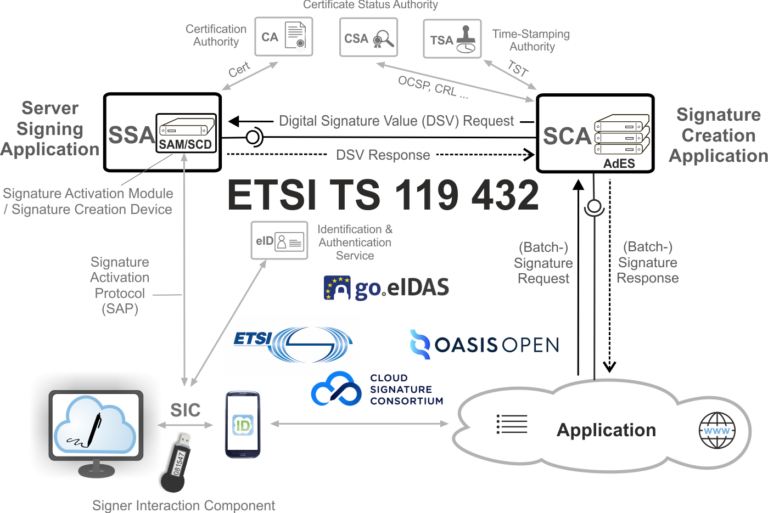
As the digital landscape continues to evolve, businesses operating within the European Union (EU) must stay ahead of regulatory changes designed to enhance security and streamline online transactions. One of the most significant developments on the horizon is the introduction of eIDAS 2.0, an update to the original eIDAS regulation that promises to elevate trust and security in the digital world.
What is eIDAS?
eIDAS, which stands for electronic Identification, Authentication, and trust Services, is a regulation established by the European Union to facilitate secure electronic transactions across its member states. Since its inception, eIDAS has ensured that digital identities, signatures, and electronic transactions are recognized and trusted across borders. This has made it easier for businesses and individuals to engage in activities such as signing documents, accessing services, and verifying identities online, regardless of where they are located within the EU.

However, as the digital world has advanced, so have the security threats and complexities involved in managing digital identities. Recognizing these challenges, the EU is preparing to implement eIDAS 2.0—a comprehensive update designed to address the limitations of the original regulation.
What’s New in eIDAS 2.0?
eIDAS 2.0 builds on the foundation of its predecessor but brings with it several key improvements aimed at creating a more secure, efficient, and user-friendly digital environment. Here are the major updates that businesses need to be aware of:
Enhanced Security: eIDAS 2.0 puts a stronger emphasis on security, particularly in the area of user authentication. This means businesses will need to implement stricter verification measures when dealing with digital identities, reducing the risk of identity theft and fraud.
Expanded Range of Trusted Services: The new regulation expands the types of electronic services that can be trusted and recognized across EU borders. This creates more opportunities for businesses to securely engage with customers and partners in other EU member states.
European Digital Identity Wallet (EUDI): One of the most groundbreaking changes in eIDAS 2.0 is the introduction of the European Digital Identity Wallet (EUDI). This wallet allows individuals to store and manage their digital credentials securely in one place. Users will have greater control over their personal data, with clear consent mechanisms allowing them to decide what information is shared and when.
What Does This Mean for Businesses?
For businesses operating in the EU, eIDAS 2.0 represents both a challenge and an opportunity. On the one hand, companies will need to adjust their identity verification processes to comply with the new regulation. On the other hand, those that act early can position themselves to benefit from the enhanced security and efficiency that eIDAS 2.0 promises.
Here are some of the key ways in which eIDAS 2.0 and EUDI wallets will impact businesses:
Streamlined Identity Verification: The standardized approach introduced by eIDAS 2.0 will make it easier for businesses to verify identities across the EU. This can reduce friction in customer interactions, speed up processes, and build trust.
Mandatory Compliance by 2026: While businesses have some time to adjust, by 2026, accepting EUDIs will be mandatory. Companies that delay preparing for this shift risk falling behind when the regulation comes into full effect. Proactively developing an identity management strategy now will ensure a smooth transition.
Focus on Customer Privacy: With eIDAS 2.0, businesses will need to prioritize customer privacy. The regulation emphasizes clear consent mechanisms and stricter data protection standards, which will require companies to be transparent and diligent in handling personal information.
How to Prepare for eIDAS 2.0
To prepare for eIDAS 2.0, businesses should start evaluating their existing identity verification processes and identifying areas that need improvement. This could involve:
Assessing Current Systems: Review your current identity management systems to ensure they meet the new security and privacy standards set out in eIDAS 2.0.
Creating a Roadmap for EUDI Integration: Develop a plan for integrating EUDIs into your workflows. This may require upgrading systems, training staff, and working with identity management solution providers that prioritize both compliance and customer experience.
Focusing on Privacy: Make sure that your systems and processes allow customers to control their personal data effectively. Providing clear consent mechanisms and adhering to strict data protection standards will not only help with compliance but also build trust with your customers.
Conclusion
eIDAS 2.0 is set to transform the way businesses in the EU handle digital identities and online transactions. While the new regulation presents certain challenges, it also offers a wealth of opportunities for businesses willing to adapt early. By focusing on enhanced security, streamlined verification processes, and customer privacy, companies can leverage eIDAS 2.0 to create a more secure and efficient online environment, ultimately driving growth and improving customer satisfaction.
With the mandatory compliance deadline of 2026 approaching, now is the time for businesses to begin preparing for the shift. Those that do will be well-positioned to thrive in the new era of secure digital transactions within the EU.
Comments